MAL ROGERS visits the ancient city of Kilkenny
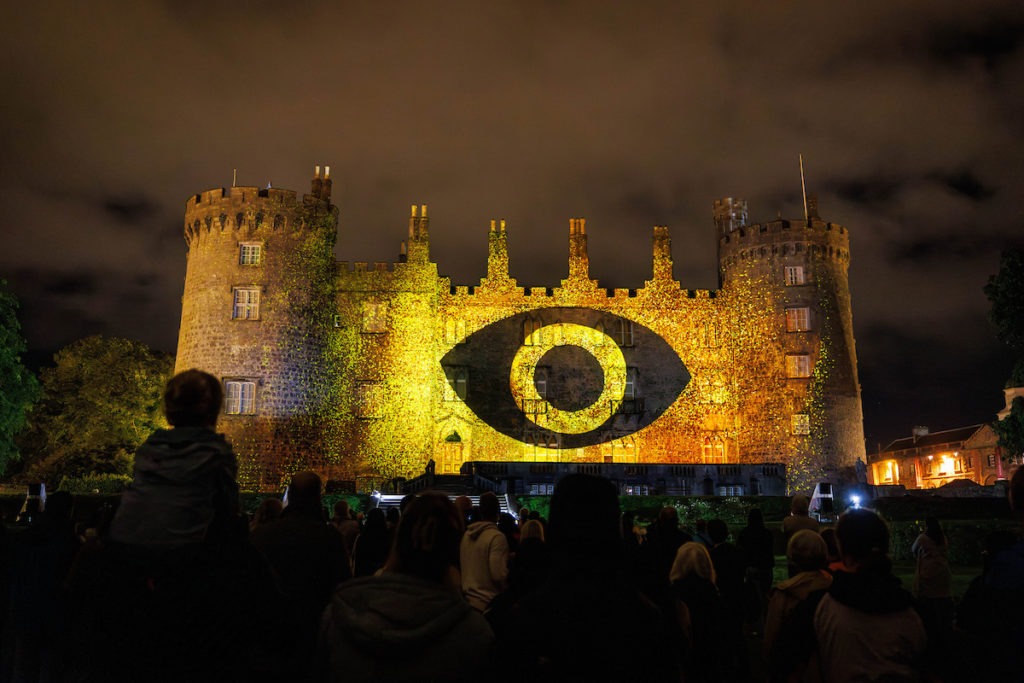 LIT UP Kilkenny Castle during last year's Arts Festival (Image Tourism Ireland)
LIT UP Kilkenny Castle during last year's Arts Festival (Image Tourism Ireland)The festival
Kilkenny Arts Festival has launched its 2024 programme (August 8-18) with a music line-up that includes everything from opera to a new traditional music project titled 78 Revolutions by Niall Vallely. For concertina player and composer Vallely’s new work 78 Revolutions he will be joined by some of Ireland top traditional musician. The work combines archival recordings with live performance.
Meanwhile Singer-songwriter Lisa O’Neill will be in St Canice’s, Mick Flannery is in the Set Theatre and there’s a new work from Rough Magic theatre company, Migration Sonatina from Irish Modern Dance Theatre. and a range of talks and exhibitions.
www.kilkennyarts.ie
Quite the laughing matter
Thirty years ago, in 1994, everyone laughed when laughed when Lynn Cahill of the Bickerstaffe theatre company in Kilkenny suggested that the city should run an international comedy festival. Well they’re not laughing now. Or, actually they are. The Cat Laughs Comedy Festival has been called the "Best Little Comedy Festival in the world" by The Guardian and RTÉ. It’s held in the first weekend in June every year
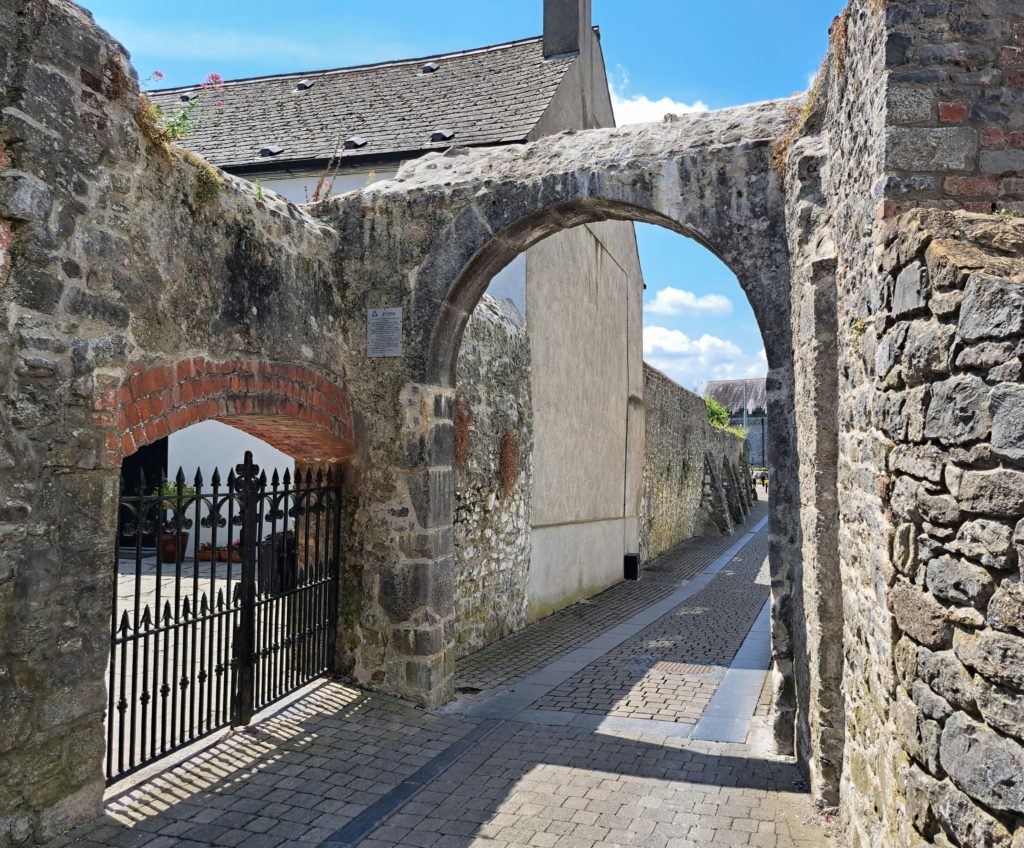 MEDIAEVAL MARBLE CITY Black Freren Gate, Medieval City Walls (image Tourism Ireland)
MEDIAEVAL MARBLE CITY Black Freren Gate, Medieval City Walls (image Tourism Ireland)The backstory
Kilkenny almost seems to have had more history than it can handle. The city’s timeline stretches back to the 5th or 6th century, an early Christian settlement founded by followers of St Canice — hence the name, Cill Chainnigh, eventually morphing into the English Kilkenny. It has kept more of its mediaeval character than any other Irish city — two imposing cathedrals and an extremely impressive 12th century castle overlooking the River Nore put it right up there with the very finest of Europe’s cities.
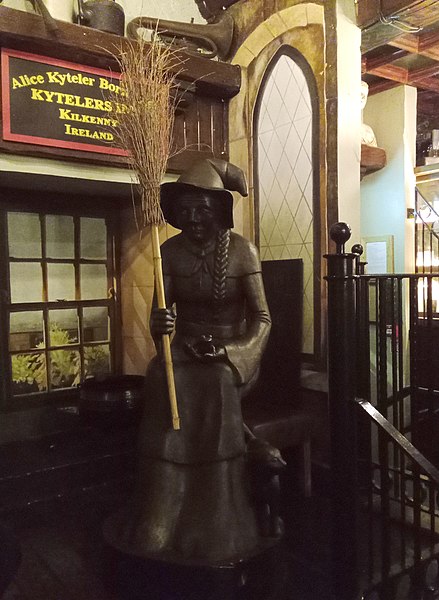 Alice Kyteler's Inn (image A.-K. D. on Wikimedia Commons)
Alice Kyteler's Inn (image A.-K. D. on Wikimedia Commons)The nickname — The Marble City
And of course Kilkenny’s nickname, the Marble City, is a tribute to the very attractive local stone — which in fact isn’t marble at all, but carboniferous limestone. But “the Carboniferous Limestone City” doesn’t sound terrific, and as for the lyrics of Carrickfergus, forget about it. “But in Kilkenny, it is reported, they have carboniferous limestone, as black as ink . . .” No, the Marble City it is.
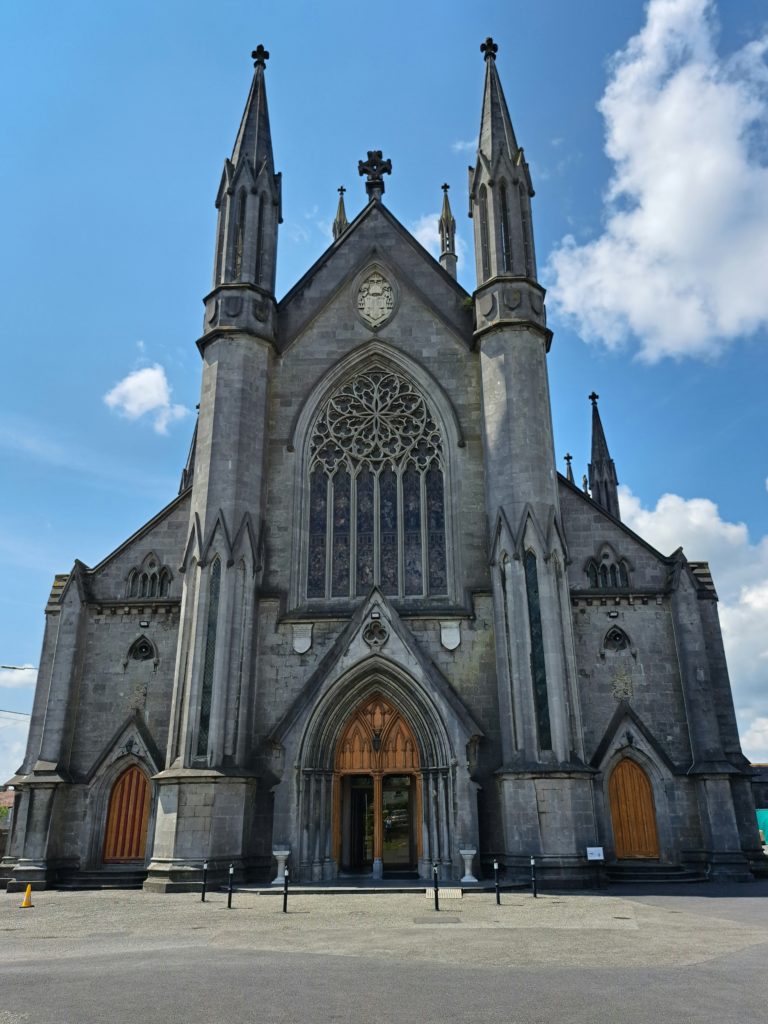 St Mary's Cathedral (image Tourism Ireland)
St Mary's Cathedral (image Tourism Ireland)The cathedrals
St. Mary’s Cathedral
St Mary’s Cathedral, aka the church of St Kieran and the Cathedral of the Assumption is Kilkenny’s Catholic cathedral, and the newer of the city’s two bishopric seats. A 19th century Early English Gothic design it is believed to have been modelled after Gloucester Cathedral.
Made from the local Kilkenny stone (the limestone) it bucks the trend of most Catholic churches in Ireland in that it is situated on the highest point of the city. Usually this is an honour granted to the Church of Ireland Protestant church, as laid down in the bible, and measured by the Holy Tape Measure of Antioch or somesuch.
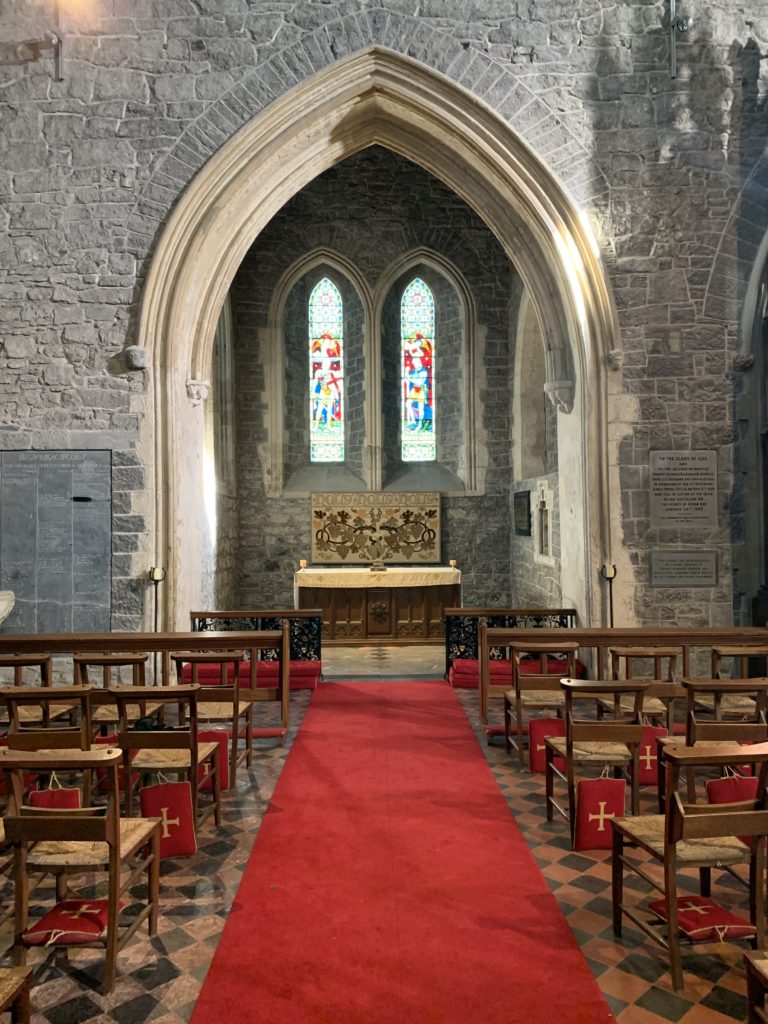 St Canice's Cathedral (image Tourism Ireland)
St Canice's Cathedral (image Tourism Ireland)The Cathedral Church of St Canice
Along with its ancient century round tower, Kilkenny Cathedral has been a landmark round these parts for some 800 years, although there has been a church on the site since the 6th century.
Head inside to see beautiful stained-glass windows and the See Chair of the Bishop of Ossory, which dates back to 1120.
The 9th (or maybe 10th) century Round Tower, the oldest standing structure in Kilkenny and built to withstand Viking raids, overlooks the city. You can climb to the top (over 30m high, that’s 100ft) for a 360 degree, 24 carat, 2000 megabyte view of the city and surrounding countryside.
The hurling
If you look up ‘hurling’ in Wikipedia, the first line says: “Not to be confused with curling or hurdling’. You would search a long time in Kilkenny to find someone who might make that error.
Kilkenny has a proud hurling history - the local cry is: “Hurling is a game for piano tuners; football is a game for piano removers”, although clashes can sometimes make the stands shake. But Kilkenny is without doubt the top hurling county — always figuring in the finals of the senior championships, or with a very good reason why they’re not.
In 1366 the Statutes of Kilkenny were brought in to chasten English settlers who found the native ways very much to their liking and had become "more Irish than the Irish themselves". The sanctions thus introduced included a ban on hurling (a somewhat unpopular move, as you might imagine). “Do not, henceforth,” the statute went, “use the plays which men call horlings, with great sticks and a ball upon the ground, from which great evils and maims have arisen....” And we’ll all drink to that.
The Kilkenny Way (www.thekilkennyway.com/)is a two hour trip that gives a unique insight into the world’s oldest and fastest field sport. Tours are daily at 12noon.
Brew haha
Kilkenny’s hostelries, of which there are many, are under-pinned by a brewing tradition that stretches back to the 14th century. As ever, the monks were at the centre of the licensed victualling trade (unlicensed back then, as it happens), brewing ale and saving souls at this spot on what is known as the Mediaeval Mile. However, commercialism soon reared its lucrative head, and Smithwick's was founded by John Smithwick in 1710 in St. Francis Abbey Brewery. Today this is Ireland's oldest operating brewery, situated on the site of the old Franciscan Abbey — tours of the brewery are available. www.smithwicksexperience.com/
The ghost tour
On the High Street, spare a thought for Alice Kyteler who in 1324 stood trial for witchcraft. Worse than that, she was accused of being a heretic – the trial was the first in European history to treat the accused of as members of an organized group of heretics – this was akin to being accused of terrorism charges today.
Sadly in those times, the law wasn’t weighted much in favour of the accused Alice was found guilty – her crime being seen as particularly heinous because she had acquired her power of sorcery by means of sexual intercourse with a demon – and she was paraded through the streets of Kilkenny. She is reported to have been dragged half naked from Talbot’s Bastion – the south western tower of the old walls which still stands – along Rose Inn Street, past the Shee Almshouse and into High Street where she was burned at the stake.
Another version of the episode says that Alice escaped to London, leaving her maid to take the punishment. To find out more of Kilkenny’s chequered history take the Kilkenny Ghost Tour, where you’ll be told about other crimes tried at the Old Jail and Courthouse, along with tales that are dark and full of terror.
The pub
There are between 70-80 pubs in and around Kilkenny, so you’re unlikely to go thirsty. Kyteler’s Inn on Kieran Street, with a history dating back to 1263, is one of the oldest hostelries in Ireland. It’s named after Alice Kyteler the bar’s founder, whose legal problems regarding witchcraft we’ve already chewed over.
Today with all thoughts of sorcery banished, the pub is a haven for traditional music, storytelling, entertainment of all types of craic.
The Castle
The Anglo-Norman Kilkenny Castle is one of the great castles of the world. A 12th century fortification remodelled in Victorian times, you can tour the inside of the old grey building, walk in the gardens, or visit the art gallery.
This was the seat of the powerful Butler family, who called this home from the 14th century until the mid-20th century.
Edward VII visited in 1904, and asked who the family were. “They’re the Butlers,” a flunkey replied.
“Well, why aren’t they serving the bloody drinks then?” barked Edward. I suppose you had to be there to get the full humour content of the joke.
The Castle regularly plays host to exhibitions and events — at the end of this month July 28-30 the castle will be hosting Scoil na gCláirseach – a Festival of Early Irish Harp concerts. The acoustics in the ancient stone building bring the best out in any music, but the mediaeval harp seems particularly suited to the atmosphere.
Crafty work
Kilkenny crafts at the Castle Crescent Yard
The Kilkenny Design Workshops in Kilkenny Castle’s 18th century stable yard features a group of designers and crafts workers from Ireland and beyond. The Crescent Yard is now headquarters of the Crafts Council of Ireland, is also home to one of the country's best craft stores, Kilkenny Design Centre and the National Craft Galler
The hotels
For an excellent city centre hotel, the Kilkenny Ormonde kilkennyormonde.com is the place. The hotel is currently offering various package deals, some which includes B&B, lunch, dinner and a ticket to the castle. Double rooms from around £135
The River Court Hotel
This four-star boutique hotel on the bank of the River Nore, is set in its own courtyard, in the middle of Kilkenny’s mediaeval winding city streets, not far from the Tholsel (or toll-gate). The hotel is overlooked by the Castle — but to be fair, most things are in Kilkenny. Rooms from around £110
With thanks to Tourism Ireland

